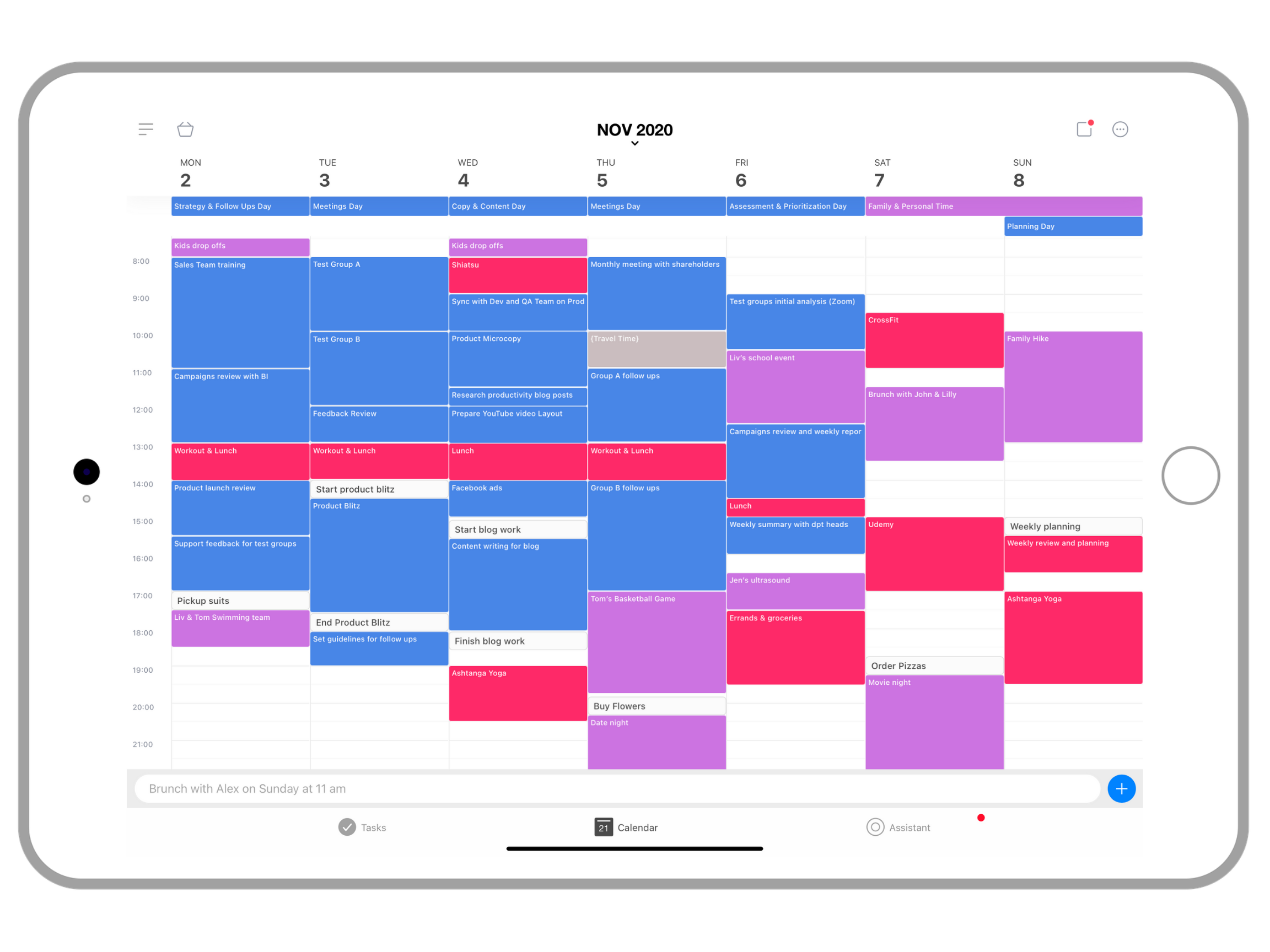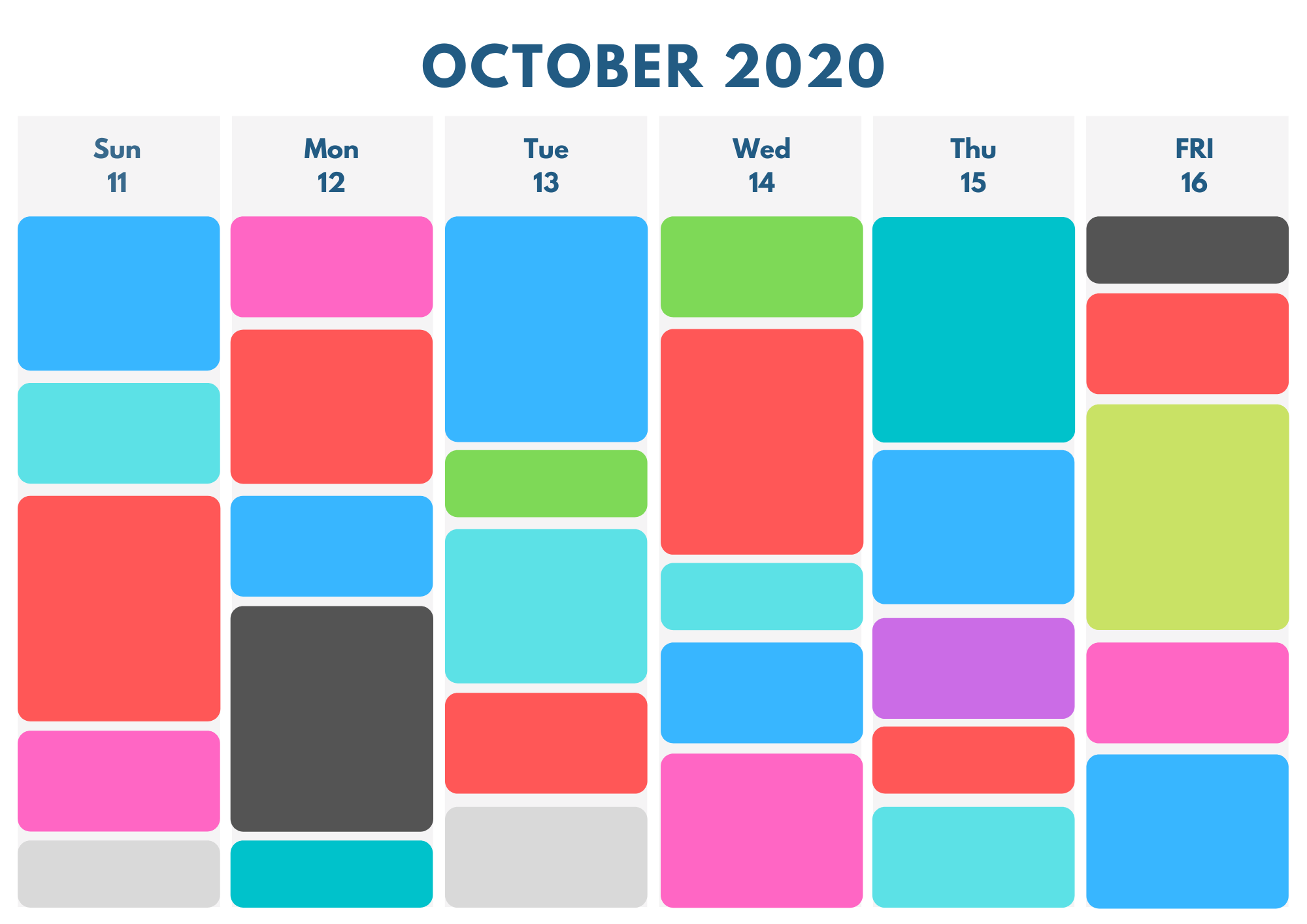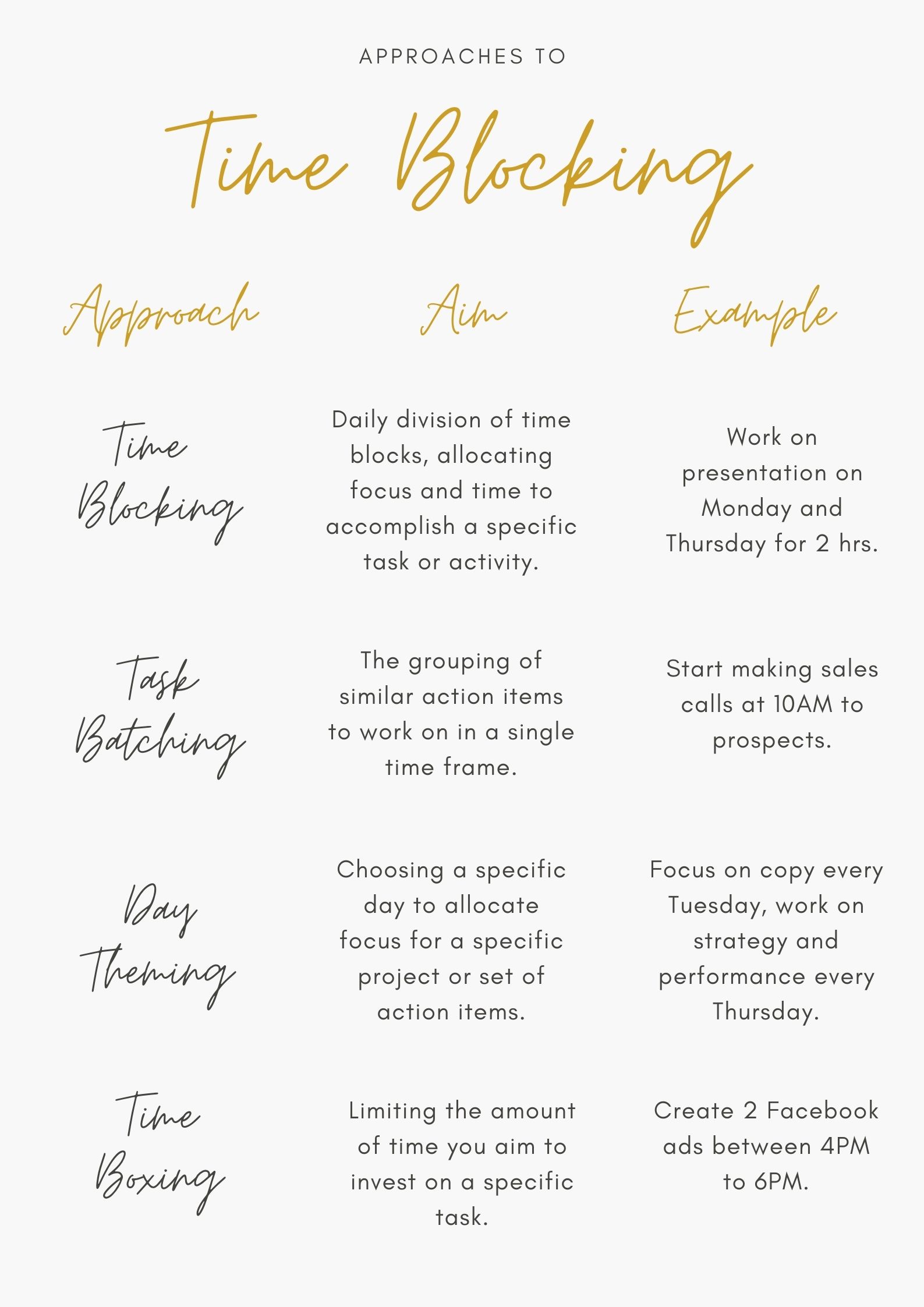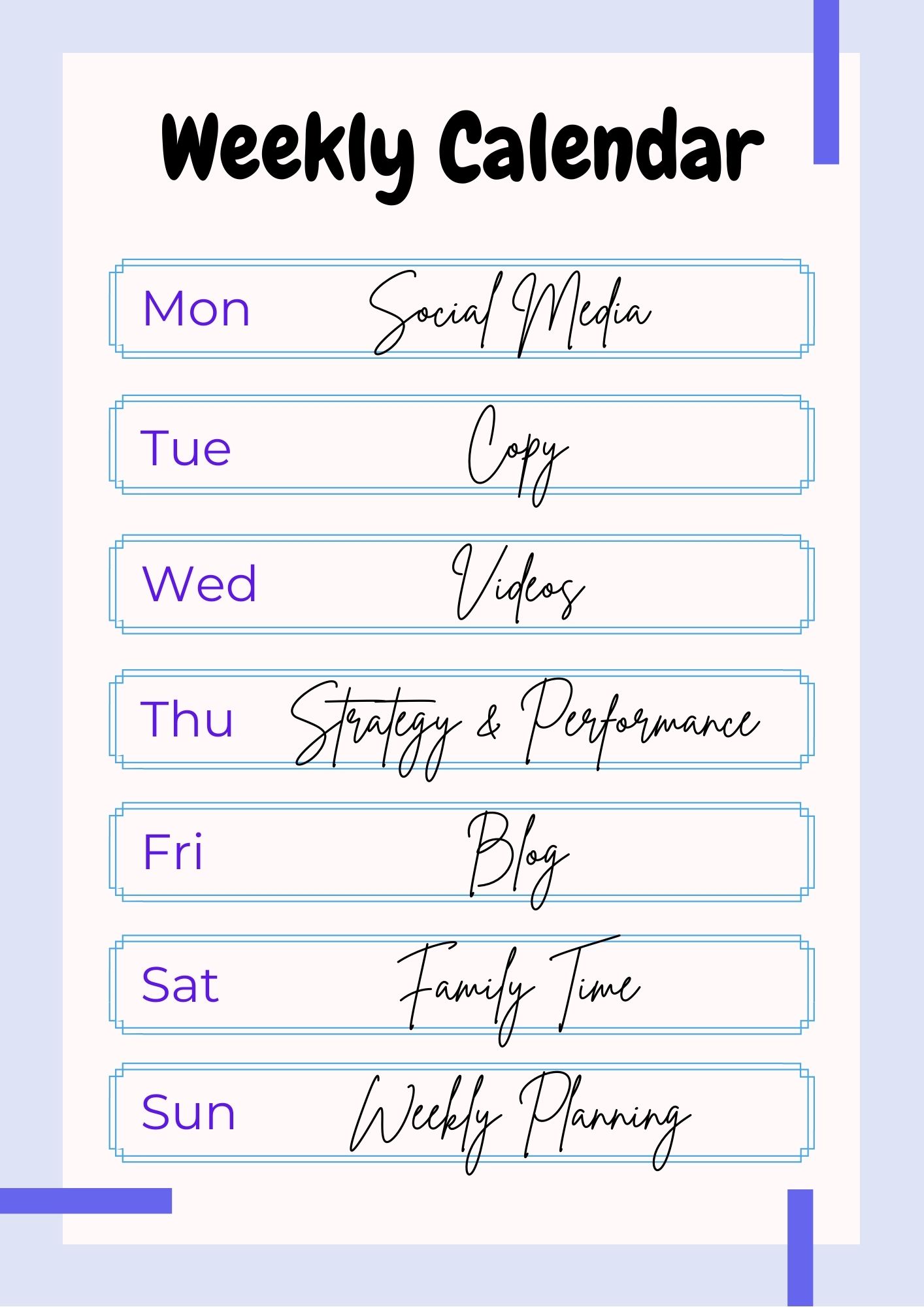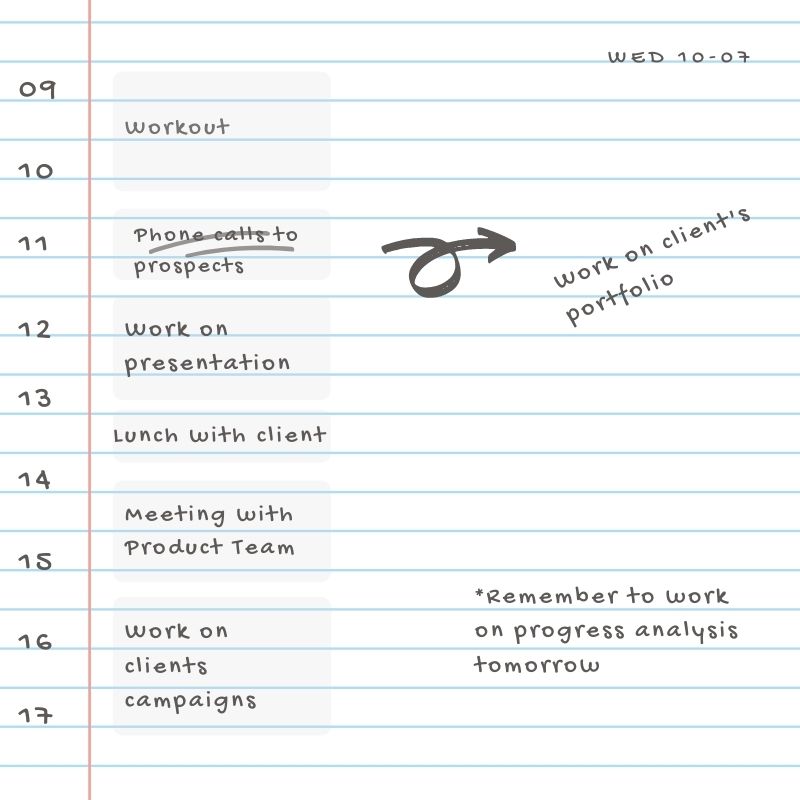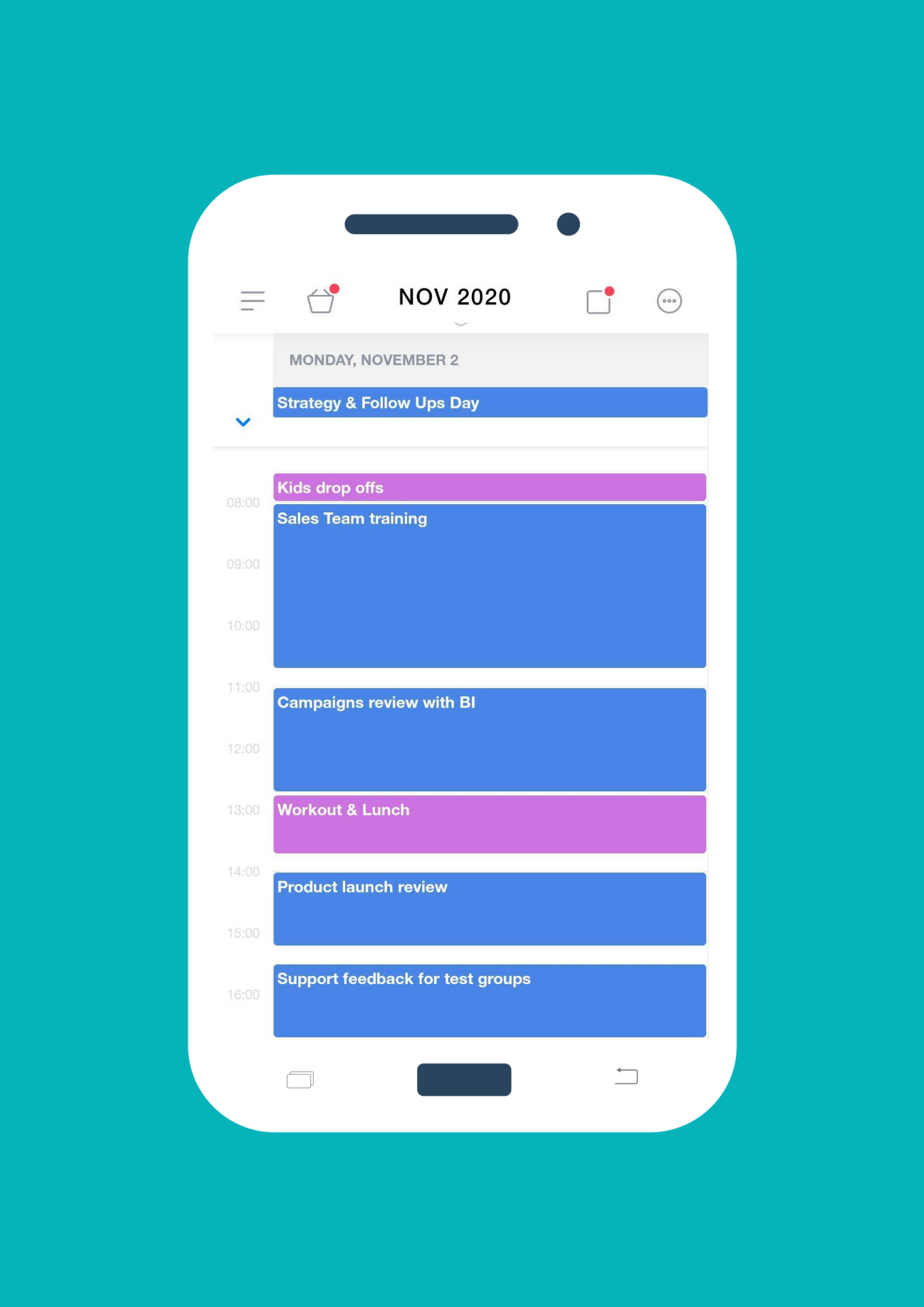“It is not enough to be busy… The question is: What are we busy about?” – Henry David Thoreau
In today’s fast-paced environment, most of us are urged to do more, work faster, be better. There seems to be more pressure to be successful than ever before. While juggling an endless amount of work, we’re expected to be exemplary parents and have a fulfilling personal life, taking excellent care of our bodies, spirits, and minds. It’s almost impossible to find balance in this constant state of reaction, with our to-do lists expanding by the minute – yet with very little hope of completing these items, when time seems to be slipping through our fingers.
So how do we get off the hamster wheel? How do we regain control over our schedule and start working towards achieving our goals? Simple. We harness the power of planning.
Introducing time blocking – a time management method used by highly successful CEOs, entrepreneurs, and productivity experts, such as Elon Musk and Bill Gates. It is the practice of planning out every moment of your day by dedicating specific “blocks” for your activities. Though it might sound rigid at first, the brilliance of this productivity method is in the quick and easy planning process, which takes only a few minutes to completely revolutionize your day.
If you find yourself feeling –
- Stressed by your workload
- Tired from constant multitasking
- Overwhelmed with the amount of work you have to do
- Not having enough time to spend with your loved ones and friends
- Never having quality time for yourself
While other productivity methods like the ‘The Eisenhower Matrix’, ‘Eat the Frog’, ‘Getting Things Done’ and ‘The Not-do list” focus on prioritization – this method focused more on how you manage your time.
This guide will help you get through it. Keep reading to learn the fundamentals of time blocking and how to use this highly effective method to take back control of your time.
Time Blocking Explained
It’s as simple as it sounds. Time blocking is the division of time to specific blocks throughout your day. Each block serves as a designated time frame to accomplish a specific goal, project, or task by zooming-in on that single item only. Instead of investing small increments of time on a never-ending list of action items, you’ll begin each day with a detailed schedule of pre-defined objectives you set out to accomplish.
At the core of this approach lays the dedicated prioritization that is a must for successful execution. Once a week, create a layout of the items on your to-do list for the week ahead and pencil a rough draft of your time blocks for each day. With each passing day, re-review any remaining items or new ones that were added to your lists, and adjust your weekly time blocks accordingly.
With this concrete outline of your time blocks, there will be no need to struggle with constantly allocating your focus, as you will always know in advance what’s your next task for the day. It’s all about following the schedule. And if you get sidetracked? Simply get back to your time block and continue on with your work until the next one.
Approaches to Time Blocking
Within the realm of time blocking, different approaches have formed to further narrow our focus and achieve better results. Such approaches include task batching, day theming, and time boxing, which allow us to better adapt our schedule and get the most out of our day.
Task Batching
This approach is used to effectively process a batch of similar (usually bite-sized) tasks, in a designated time block. By grouping these items together, you’ll be able to minimize the amount of context-switching you have to go through each day, which will keep you focused for longer. For example, scheduling a 2-hour block to sales calls will be much more efficient than spreading them throughout the day, which will cause a massive distraction to your other tasks.
Task batching goes hand in hand with time blocking as it spares you from having to schedule small individual tasks in your calendar. Simply block off some time portions of your day for when you want to complete these batches, whether it’s phone calls, emails, self-care, meetings, cooking, errands, or others.
Day Theming
Day theming is the advanced version of task batching, for complex projects which usually require a high volume of work. For example, a marketing manager has to oversee and develop marketing campaigns, manage the company’s social media, plan promotional activities, write and proofread copy, monitor performance and strategize and many more. Instead of having to juggle between tasks, while losing focus and having to constantly switch context, day theming allows one to dedicate an entire day per week for such complex initiatives.
Creating work patterns to follow on a recurring daily basis allows you to ease your mind, knowing all tasks will be tackled at their designated time. It’s the perfect way to eliminate the daily juggling of unrelated tasks which leads to little to no results, as productivity hinders.
Time boxing
Often confused with time blocking, time boxing is actually an imposed limit on how much time you invest on any specific action item. As indicated by the example above, time boxing can be used for tasks that require a clear time frame to be executed within, such as “create two Facebook ads between 4PM to 6PM”.
Having a limited amount of time to work on a task commands attention to its due date and significantly increases the odds of making substantial progress. Those who enjoy a challenge can find ways to gamify this process and set rewards for successful completion.
You may set time boxes within your general time blocks to zoom-in on specific tasks and ensure you make the progress you’re aiming for throughout that duration.
Why Is Time Blocking So Effective?
It gets you focused
While it offers a pretty straightforward approach, time blocking can significantly change the way you execute your to dos and control your time.
In fact, Elon Musk is a known supporter of this method and uses it frequently to effectively manage his time. He actually uses time blocking right at the start of each day to assign each time block on his agenda to a specific task he needs to work on throughout the day. He is known to work 11 to 14 hours a day and sleep only for 6 so time blocking is essential to make the most out of each and every day.
By assigning time blocks like Musk, you’re allowing yourself to allocate mental focus to a single task and actually get it done, instead of spreading your attention across various items with little to no progress. The more your practice this method, the better you become at maintaining focus for longer periods.
It makes you work
Time blocking makes you spend a substantial amount of time on focused, high-impact tasks, which ultimately gets you faster to your goals. It knocks out distractions and helps you stay on track with your long-term objective. When you time box minuscule tasks such as business calls and emails, you’re defining clear limits to the amount of time you invest in working on those items. Combining time boxing with task batching to group all similar items together, will also help you power through those tasks as you have a deadline to stick to.
It adds awareness to your day
Time management is an acquired skill. It’s not easy to foresee how much time each and every task on our agenda may take until completion. Time blocking forces us to create priorities, define time limits and stick to them. It’s the intentional effort of finding the time to work through your to-dos while understanding your personal time constraints and limitations. This results in a much better understanding of your schedule, the better creation of long term goals and the ability to work productivity towards those goals each and every day.
It keeps perfectionism at bay
Perfectionists thrive in a pre-defined setting. It provides them with a frame of work that prevents them from over-tweaking and re-doing. Projects without a time frame often leave too much room for re-reviewing and tweaking, which is a perfectionist’s trap. Time boxing can help impose a strict deadline to finishing your projects, while preventing you from over-investing time required for other action items. If you too are struggling with getting everything ‘just right’, time boxing is the perfect solution to executing and completing your tasks in time.
It helps you stick to your goals
We all have goals we wish to accomplish. Many of us write those down with the intent to complete them by a specific date and time. However, what many lack in doing is setting specific action items with their own due dates in the way to achieving their target. Intent alone won’t bring you to your goals. Having a goal without a plan will be hard to follow through on. When you schedule your tasks and goals by setting a designated amount of time for each item, you’re allowing yourself to get the focus you need to stick to your plans.
Will time blocking work for my schedule?
Can a unified approach to all types of action items really work? How about a sales manager who has to respond to customers and initiate cold calls throughout the day? Or a support specialist working with tickets? These types of ‘reactive’ jobs make it almost impossible to anticipate what will be your schedule at any given time throughout the day.
Yet, taking control over even a small portion of your schedule can be helpful no matter what your type of job you have. Cal Newport, author of Deep Work: Rules for Focused Success in a Distracted World and a proponent of time blocking, writes in his blog:
“Periods of open-ended reactivity can be blocked off like any other type of obligation. Even if you’re blocking most of your day for reactive work, for example, the fact that you are controlling your schedule will allow you to dedicate some small blocks (perhaps at the schedule periphery) to deeper pursuits”.
He does on to suggest giving ‘open-ended reactive blocks secondary purposes: e.g., “process client requests; if I have downtime during this block, work on project X”. This kind of approach allows for flexibility whenever needed, while still having a secondary goal in mind for any remaining time.
It’s not easy to manage your time when you’re faced with external forces. However, it’s still no reason to give up on your goals or even postpone them. Time blocking will give you back a sense of control over your time, even with the most unpredictable schedules, and help you make concrete steps towards reaching your objectives.
Make It Work
Simplicity is key when it comes to time blocking. It does not need to take too much effort on your part, even during the planning stage. The best way to stick to it is to maintain this simplicity without over-thinking, so you’re able to dedicate the majority of your time to what really matters. These are our tips to help you stick to this method successfully and make the most of your time:
Assess and Reassess
Be mindful of your schedule. Certain time constraints may mean you’ll need to over-pad your time blocks so you have some extra time to complete your tasks or transition between them, whenever you need it. It can be hard at first to predict the duration of each of your tasks, which is why it’s best to block too much time rather than too little. You can even create ‘empty’ time blocks as spare time while adjusting. As you get better in assessing your time, you will be able to create more accurate schedules with your time blocks, leaving more time for actual work.
Stay Flexible
Your schedule is an outline that helps guide you through the various action items on your agenda. It’s not set in stone. It can adapt to incoming tasks and you shouldn’t be too rigid about it. You can always update your time blocks as new tasks are added and shorten or prolong your time blocks if needed. Remember that you’re playing the long game. The daily annoyances, failures, and roadblocks that can get in our way should not be perceived as setbacks, but simply opportunities for learning and growth. Your time blocks are there to challenge you and help you make progress, take them as they are, and enjoy the process.
Allow for Leisure Time
While it may be tempting to extend your time blocks to your leisure activities, it is our recommendation that you stick to a general guideline only. It’s great to dedicate chunks of time to relaxing, self-care, family time, and social gatherings. However, trying to zoom-in on what these time blocks will include, might take the fun out of these activities. Let yourself enjoy this time more spontaneously by setting aside time for meeting friends, going out with your partner or simply have a night off to yourself. Do what makes you happy during that time and recharge for the next time block.
Time blocking with Any.do
Time blocking doesn’t require a specific tool or app to get started. It’s as simple as using a pen and paper to start framing your schedule. However, using a tool like Any.do, can really make it easier to follow and cut planning time to a minimum. In this section, we will cover all the different ways to implement time blocking with Any.do, focusing also on its different variations – task batching, day theming, and time boxing.
Mapping Your Calendar
If you’re new to time blocking, the easiest way to start is by segmenting your to dos into broader categories as a base for creating and defining your time blocks. Once you understand the categories you’re working with and the type of items that will need to be worked into your daily time blocks, you will be able to start mapping out your calendar.
To start creating an outline of your time blocks, we recommend using the Any.do lists feature to organize your to-dos by grouping similar items. For example, such lists for a VP Marketing professional may include:
- Meetings
- Product copy
- Training sessions
- Research
- Writing
- Analysis & Reports
- Professional Development
- Self-care
- Family time
As soon as you’re done setting up your lists, you can start working on your time blocks and create an outline of your upcoming week. Any.do’s Calendar View actually provides a designated 7 days view which is perfect for such planning!
You may link the app with any of your favorite calendars, such as Google, Outlook, and iCal, and work on them all simultaneously. As you create time frames for each of your categories, make sure that you pad your events with enough ‘spare’ time to avoid stress when switching from one block to the next. Once you get used to this way of organizing, you will be able to set the events more accurately as you plan out your time blocks.
With Any.do you also have the flexibility to decide which calendars you wish to see at any given moment. If you’re working on a shared calendar, for example, you can set your ‘meetings’ time per your scheduled events and vice versa. Additionally, you can switch from your time-blocking calendar to any of your work calendars throughout the day, to view your work meetings and other events.
Being able to see both tasks and events in a single view with Any.do, makes it easy to also time-box specific categories by setting reminders for start and end time. These will help limit your work, which will encourage you to make significant progress. With daily, weekly, 3 days, and agenda views, it’s easier than ever to stick to your time blocks and get things done.
However, if you just want to start with a simple rough draft to get things going, you can always opt for the old fashioned pen and paper. It might be easier at first to scribble down your time blocks as you’re adapting to the process. Once you’re ready to power up, Any.do is your best bet for effective time planning.
Task Batching with Color Tags
Working with a calendar is a great way to get an overview of your weekly agenda and map out your work. However, when zooming in on your day to day tasks, it might be more practical to break down your blocks into individual items which you can work on during the designated time frame.
Batching similar items to work on within your time blocks, can be easily done with Any.do’s Color Tags. As you review the items in your to-do lists, make sure to add relevant tags per each of your time blocks so you can refer back to those tasks once you’re ready to start work.
Adding tagged items to your to-do lists will create a better flow for processing action items, as you’ll be able to view all corresponding tasks together at a glance. It will also help planning ahead since you’ll know exactly how many items are to be dealt with during each time block. Any.do offers single-tag views to go over during your weekly planning, displaying your items by reminder time or due dates for optimal prioritization.
That said, not every item needs to be meticulously planned. Our tags are there to help you organize your workload, not to over-program your agenda. We encourage you to play around with how you approach your action items until you find the most efficient way to get things done.
Day Theming to the Max
As you get more advanced with your time management skills, you can start exploring more constructed approaches such as day theming. This approach might look simple at first, but it requires a true understanding of how much time you invest in each of your work and personal projects. However, when you reach a point where you’re able to set your focus on a specific category per day, you will be opening the door to higher mental clarity and increased productivity.
Day theming is a great way to gain control over your schedule. You can set a daily event per each day of the week to mark what your focus will be on throughout that day. You can then maximize your time blocks by scheduling corresponding items in the same time frame, which will negate the need to constantly switch your focus. Knowing what’s your main aim for the day, will help block-out distractions and help stick to your scheduled to-dos by feeding each other, which will in turn boost your motivation.
Whether you’re planning with Any.do or simply using pen and paper, give time-blocking a chance. Try out the different approaches and see which ones work best for your own particular schedule. The effectiveness of this method has been proven by some of the busiest people out there – so it’s bound to help you too!

